Designer Binders
Inside the international bookbinding exhibition at New York’s Grolier Club By Richard Goodman
The opening of Bound for Success: Designer Bookbinders International Bookbinding Exhibition at New York’s Grolier Club was on a windy, rainy night, the rain slashing sideways vehemently, so that umbrellas were of little use. The rain was most appropriate for this exhibition, which was a contest organized by Designer Bookbinders in conjunction with Oxford’s Bodleian Library around the theme of water. Several of the speakers at the exhibit’s opening on the evening of May 18 could not resist remarking upon this fact, trying, it seemed, to make something positive out of what in all respects was simply a lousy, wet evening. Despite the weather, the club’s ground floor exhibition room was pretty much packed with people eager to see 117 bindings that were chosen among the 240 entries from 21 countries. Alain Taral of France won first prize. Second went to Jenni Grey of Great Britain.
The contestants were given a specially commissioned book, Water, an anthology of poems in several European languages along with illustrations, and told to bind it. To wander by the glass-encased entries was to experience several disparate reactions. The first is: none of the entries are remotely the same. They are all interestingly, creatively different. Yes, of course, many use leather, and they all must conform—more or less—to a certain shape, but within those rather simple categories lies great variety. Some, like the Czech Republic’s Eliska Cabalová-Hlavácová’s entry, are both ingenious and beautiful. Her binding is made of vellum with sea shell-shaped boards that extend beyond the book’s boundaries. Some, like Estonia’s Rene Haljasmäe’s entry, with its plethora of old metal spinners (lures used for fishing) attached to the covers, seem more clever than beautiful. Mary Norwood’s entry, with its covers festooned with domestic water pipes, falls under this category as well.
A second reaction is one that anyone will have in an exhibition based on a contest: you don’t necessarily agree with the judges’ decisions. So, there are personal favorites, like American Scott Kellar’s entry, with its avatar-like abstract figures swimming across the covers, like light shimmers in a pool. Or Dominique Dumont’s binding of glazed goatskin with its very real-looking raindrops made of resin dotting the covers. Or John Burton’s lovely winter scene of dark trees and a brook cutting through snow.
Which is to say, it all comes back to the old saying: there’s something here for everyone, and the judges’ decisions are really of importance only to the winners. Those who don’t appreciate abstract renditions of water or wetness—and there are many of these abstractions—can turn to the likes of Spain’s Miguel Perez Fernandez, with his covers of rocks being dramatically sprayed by uplifting surf. Or they can turn to America’s Marvel Maring and his austere blue aquarium covers, with coral and staring fish. Those who like to figure out puzzles can look to the United Kingdom’s Christopher Shaw and his entry of wavy gold lines on a dark background and wonder what this has to do with water. Wit is provided by an entry like that of George Kirkpatrick of the United Kingdom, whose front cover is a rendition of dried mud cracks, indicating the absence of water.
The winner, Alain Taral, who received a prize of £7,500 (about $10,000) for his binding made of pear wood covered by Karelian birch veneer, was there. He spoke briefly, in French, expressing his gratitude and pride and his pleasure at being at the Grolier Club. Taral lives in a small village above Hyères, which is about halfway between Marseille and Nice. He had worked originally in management for the French navy but then retired and began working with veneer. A bookbinder came to him at one point and asked him to produce a cover for a book he was binding. This intrigued Taral, and he decided to learn how to do it himself. He went to school to learn, and now, he does, in fact, make his living as a bookbinder.
The exhibition, curated by Lester Capon, is on its third and last American leg. It opened at the Boston Public Library last fall, then journeyed to the auctioneers Bonhams & Butterfields in San Francisco before it migrated back east to the Grolier Club, where it will remain until July 31. An appealing, hardbound catalog featuring marbling by the late Ann Muir is available.









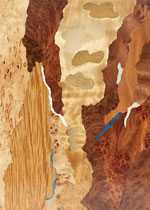
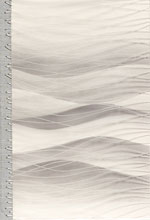
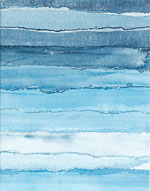
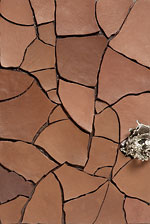
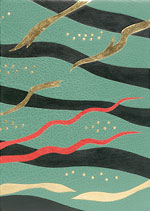
 Richard Goodman is the author of
Richard Goodman is the author of